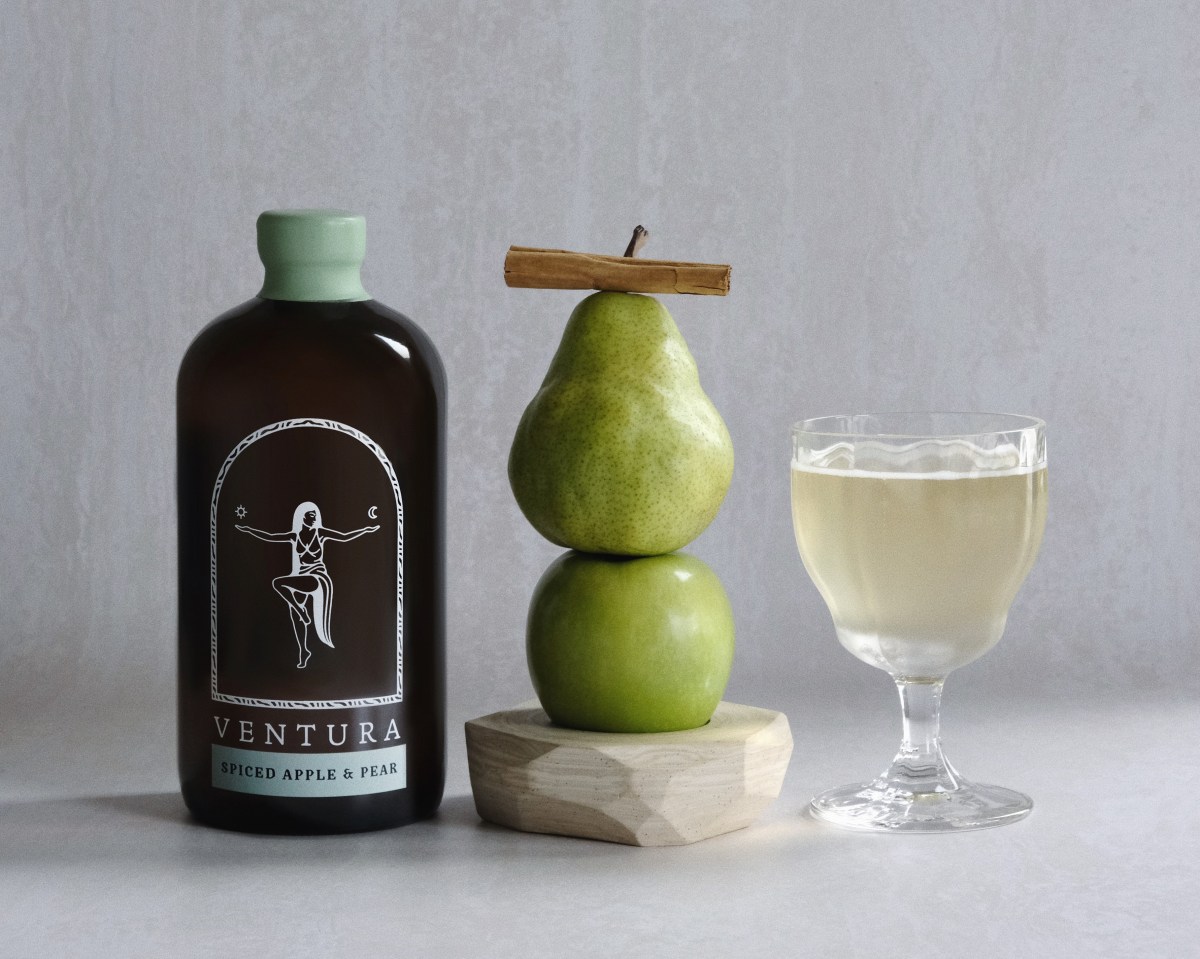The Northern River region in New South Wales is known for its vast sands and lush rainforests, making it an ideal home base for Ventura Brewing — one of Australia’s first hard kombucha brands. Co-Founders Shanu Walsh and Dom Hurley set up the brewery in Murwillumbah where everything “tastes better when it’s made in paradise”.
They say you can’t argue with logic, and the same can be said for being an early adaptor of trends. The US has always been a nucleus of forward-thinking products, with the emergence of beverages that incorporate a ‘wellness’ angle skyrocketing in popularity.
Walsh and Hurley first tried hard kombucha during a trip to the States and thought they’d give it a crack in a “brew cave” when they returned home. Pilot batches soon turned into something much bigger — a core range, seasonal specials and the country’s first alcoholic kombucha taproom set to launch in the coming months.
Hospitality speaks to Walsh about brewing hard kombucha, twisting familiar flavour profiles and the heights he hopes the sessionable drink will reach.
Kombucha has been around for thousands of years, but the product has no doubt experienced a massive surge in popularity recently. The beverage is made with a base of tea, typically green or black (or both), combined with sugar and a SCOBY (symbiotic colony of bacteria). The batch is left to ferment, with each successful run resulting in a new SCOBY forming on top of the liquid.
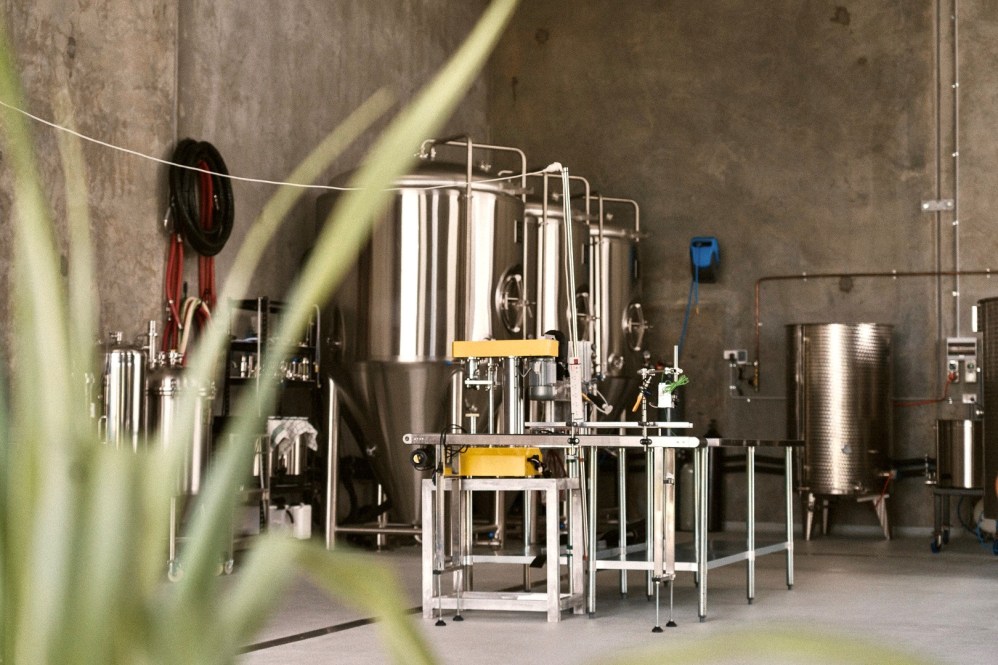
The global kombucha industry is estimated to be worth more than $16 billion by 2027, which means there’s huge potential for kombucha-affiliated products. Combining alcohol with mixers is nothing new — green tea and Hennessy, vodka cranberry, gin and tonic, rum and Coke — but the prolific boom of hard seltzer (sparkling water) has seen the emergence of a new category that forgoes sugar and is accessible to a wide consumer base.
Kombucha has been linked to a range of health benefits related to digestion, energy, immunity and energy, but Ventura doesn’t promote its products as being healthy as they contain alcohol, which is said to damage or eliminate the probiotics found in kombucha.
“There are a lot of good acids produced by the bacteria in kombucha, but we steer away from claiming it as a healthy drink because it has alcohol in it,” says Walsh. “It’s a tricky path to go down saying hard kombucha is a healthy beverage. But it is low-sugar, gluten-free and low-calorie compared to other products on the market.”
Hard lemonade, hard punch, hard tea, hard coffee and of course hard kombucha are all on the up, and US brewers are leading the way. “Dom and I spent a bit of time travelling in America and we fell in love with the industry,” says Walsh.
“When we went there, the craft beer industry was 10 years ahead of us and we foresaw the same thing happening with hard kombucha. We saw the emergence of hard kombucha in its infancy and we thought we were lacking an option here that was craft-brewed. So, we went to work brewing downstairs at my place in Cabarita Beach and we thought we would go ahead and commercialise it in late 2018.”
It would take two years for Walsh and Hurley to develop Ventura’s hard kombucha recipes, with the pair mostly relying on their own intuitions to perfect the hard kombucha they set out to create from the start. “It was difficult because it was such a new field; there was no playbook so to speak on how to do it,” says Walsh.
“All the breweries in the States kept their cards close to their chests in regards to how they were producing it.” While the formulations continued to progress in Walsh’s garage, a bespoke brewery was in the works, which is where Ventura is now based.
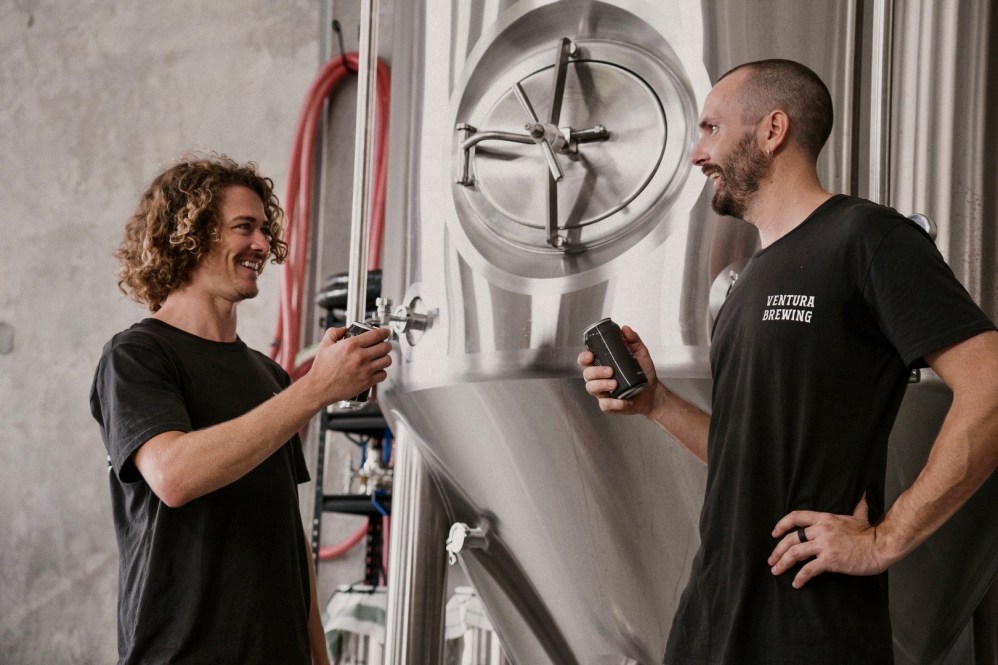
Ventura’s brewing process mostly follows the same steps, with slight alterations made according to the flavour in production. But it all starts with a batch of kombucha. “We use premium teas and it’s essentially the same recipe to make the base,” says Walsh. “It’s a combination of 50/50 black tea and green tea, which we source from China and Sri Lanka. We brew a batch which is about 1,000 litres.”
Cultures and sugars are then added to the tea which is brewed in custom tanks with open tops. “We aerate it and keep it circulating to allow the bacteria to thrive. A 1.2m pellicle forms on top of each batch.”
The kombucha is left to ferment for around two weeks before it’s moved to a unitank (two 1,500L tanks combined), which is where the alcohol volume is scaled up. “We pitch it with brewer’s yeast and raise the alcohol volume from there,” says Walsh. “The kombucha comes in at 0.3–0.5 per cent, so we brew another 4.5 to 5 per cent depending on the flavour we’re making. We never wanted to backfill it with vodka or ethanol, we do it the craft brew way, which is why we do a double fermentation.”
The secondary fermentation coincides with the addition of juices, herbs and botanicals, which can also be added pre-ferment, depending on the flavour. Ventura’s core range currently spans elderflower and cucumber, hibiscus and rosemary and ginger and yuzu, which is made with cold-pressed ginger juice and yuzu sourced from Japan.
“We add the ginger juice at the end to keep it tasting fresh and then we cool it, carbonate it and package it,” says Walsh. “We like doing more unique flavours to spark some interest and that have a point of difference. We look for flavour combinations people like and twist them.”
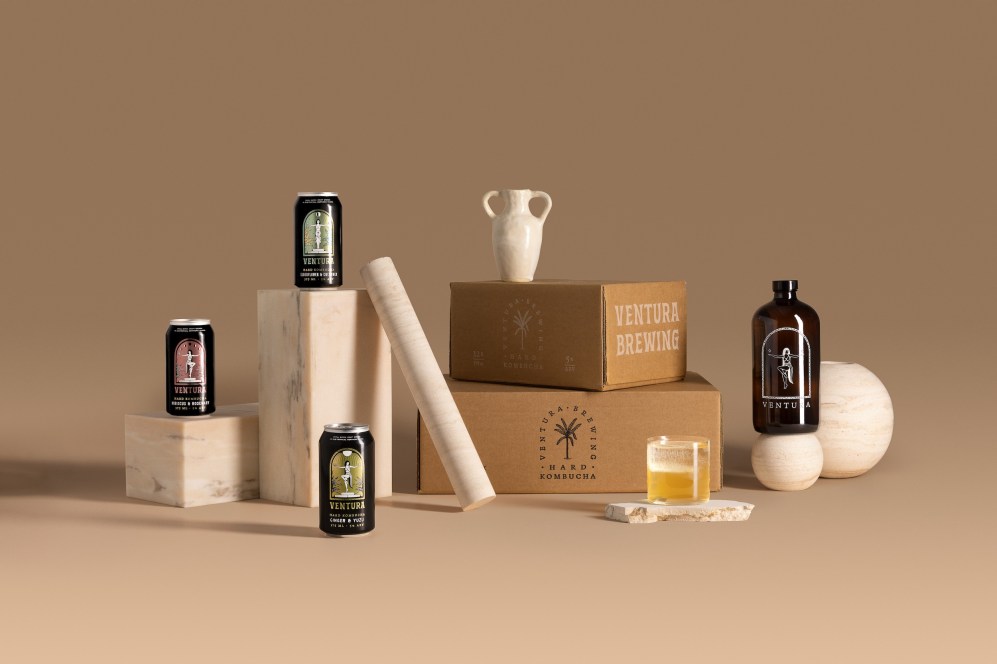
The brewery also makes seasonal flavours, which have seen limited releases of hard
kombuchas including lavender lemonade, subtropical hops, peach and sage, spiced apple and pear and an entirely new product — moonshine kombucha. “As far as I know, Goodtime Moonshine is the world’s first hard kombucha spirit,” says Walsh. “It was a collaboration we did with local distiller Keri [Algar] from Cabarita Spirits and it bursts with floral notes of elderflower and hibiscus and is finished off with subtle yuzu elements.”
For those who haven’t tried hard kombucha before, it can be described a little like this: “It’s not quite as complicated as wine and not as sweet as cider,” says Walsh. “It’s a nice, clean, refreshing and slightly tart beverage which is easy drinking. It’s effervescent like a sparkling wine and gives us a good base to play around with some interesting flavours.”
Hard kombucha is an RTD product that’s designed to chill and serve as is, but it can also be used as a mixer for those who want to up the alcohol content or try out a cocktail. Ventura’s hibiscus and rose is currently used in a cocktail at The Burrow in Cabarita Beach, with Walsh encouraging people to try different spirits and garnishes with the beverage. “Even some rosemary sprigs or a slice of fresh cucumber,” says the brewer.
The brand will soon launch a new addition to its range — watermelon and mint, which was one of its very first flavours. “We did it for a New Year’s party and everyone loved it,” says Walsh. “It’s really refreshing for the summer months, so it’s coming back.” A mid-strength option is also in the works. “The low-alc market is becoming larger and people are drinking less, but we want to cater to those who still want to have a drink and reduce the volume down.”
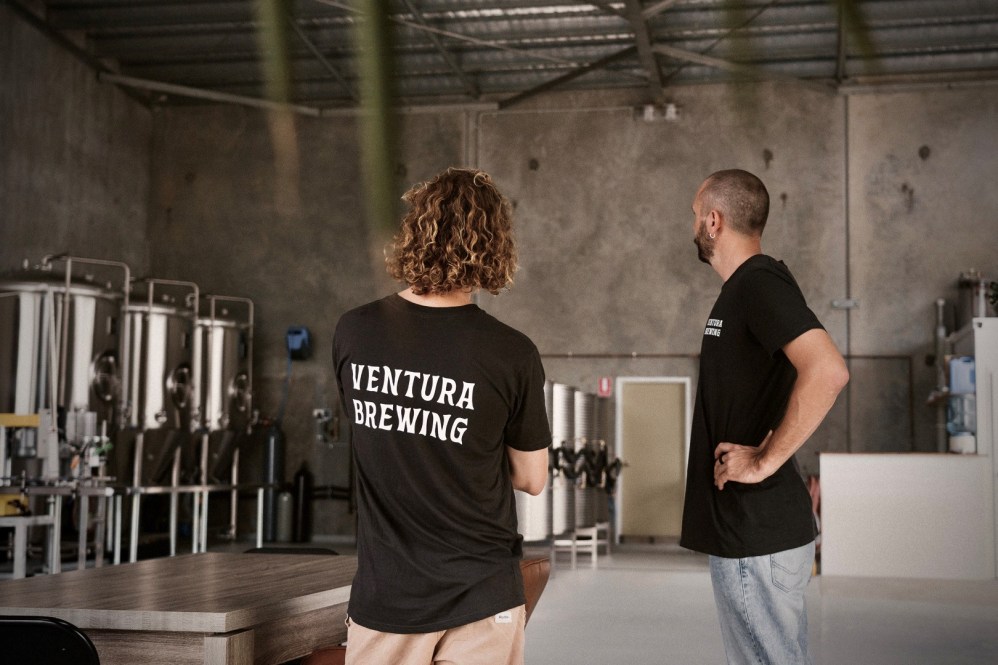
Ventura’s hard kombucha range fits into an emerging category in Australia which is
playing catch up to an industry that has well and truly kicked off in the US. But taking a slow and considered approach goes a long way when it comes to cementing a brand with staying power, and Ventura is committed to doing things the right way. “Hard kombucha has a few years to go and it’s such a new and novel product in the Australian market,” says Walsh.
“We were one of the first in Australia to start doing it the way we are, and we have a ways to go when it comes to educating people about the product, getting them to taste it and to eventually start picking it up, but we find people have a lot of interest in it. It’s early days for us and we are expanding and getting on the road, but the feedback has been good so far. We would love to see ourselves Australia-wide and get people more familiar with the product.”
Walsh and Hurley will soon open the doors to a taproom at the Murwillumbah brewery and are keen to welcome visitors and share the story behind a drink that’s a little bit different. Being the first can be daunting, but rewarding, and the results can be sweet — or aromatic, refreshing and crisp, in this case.

